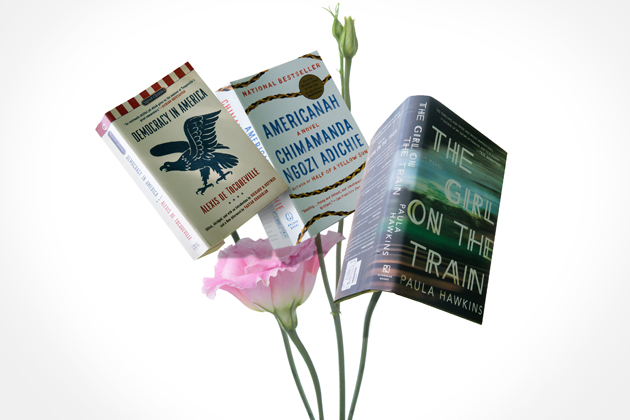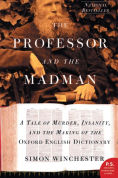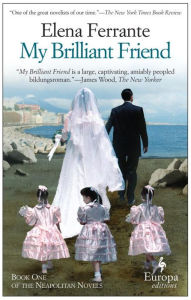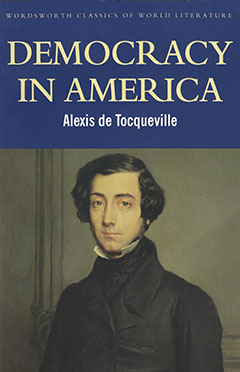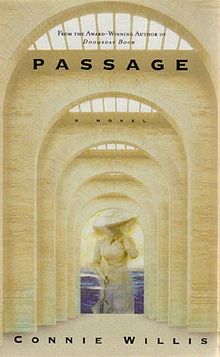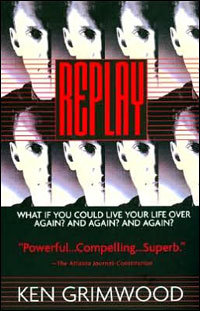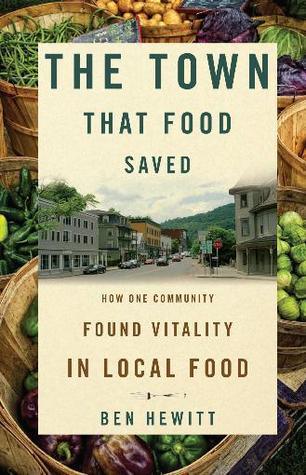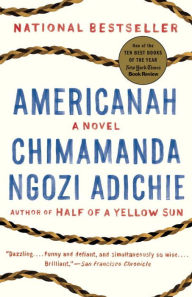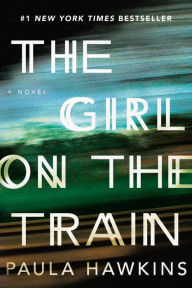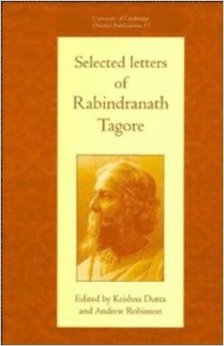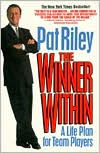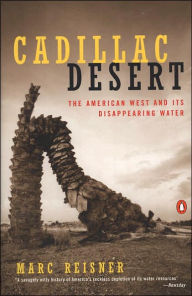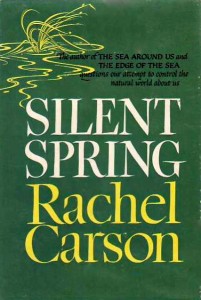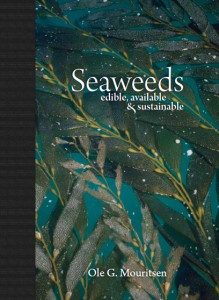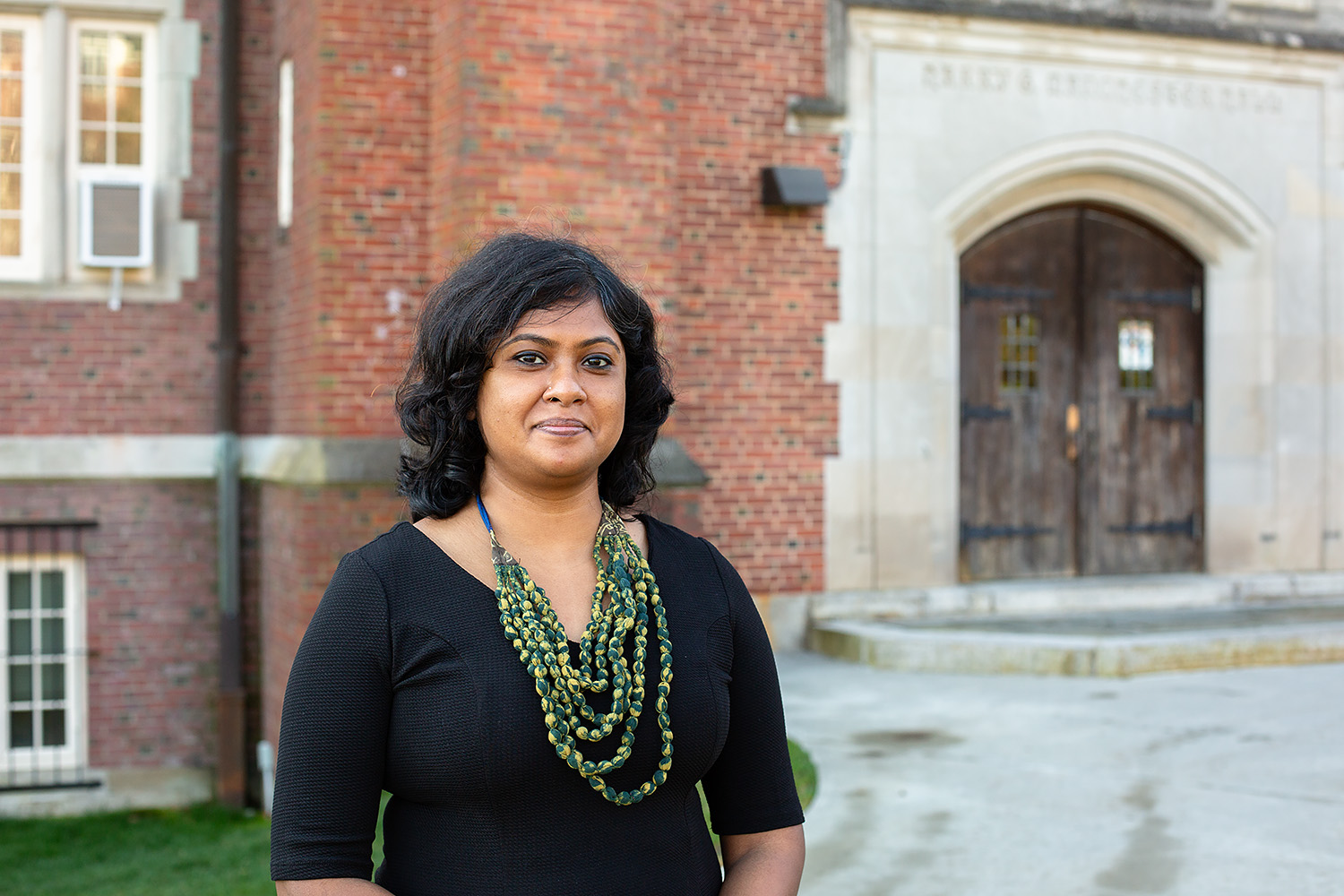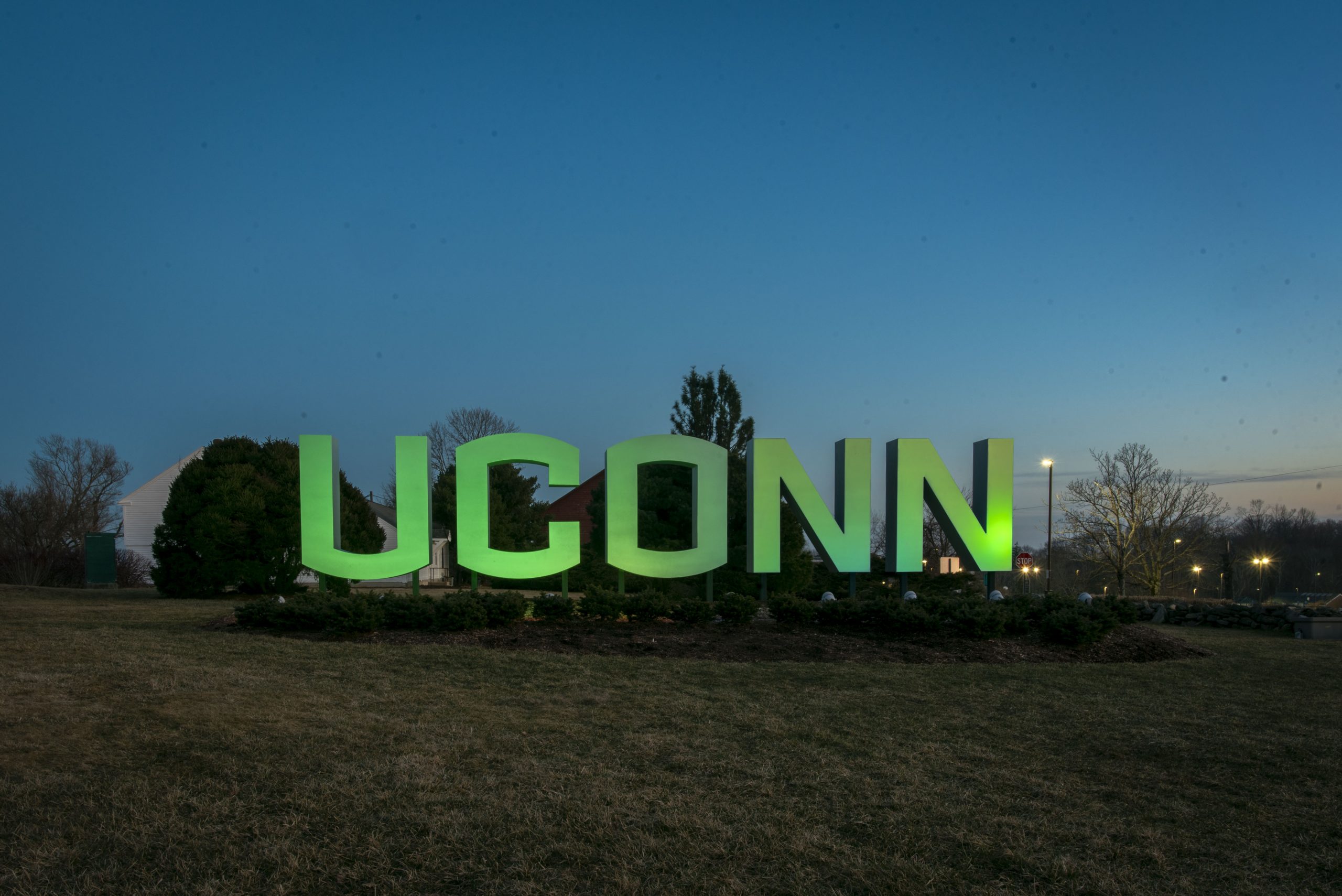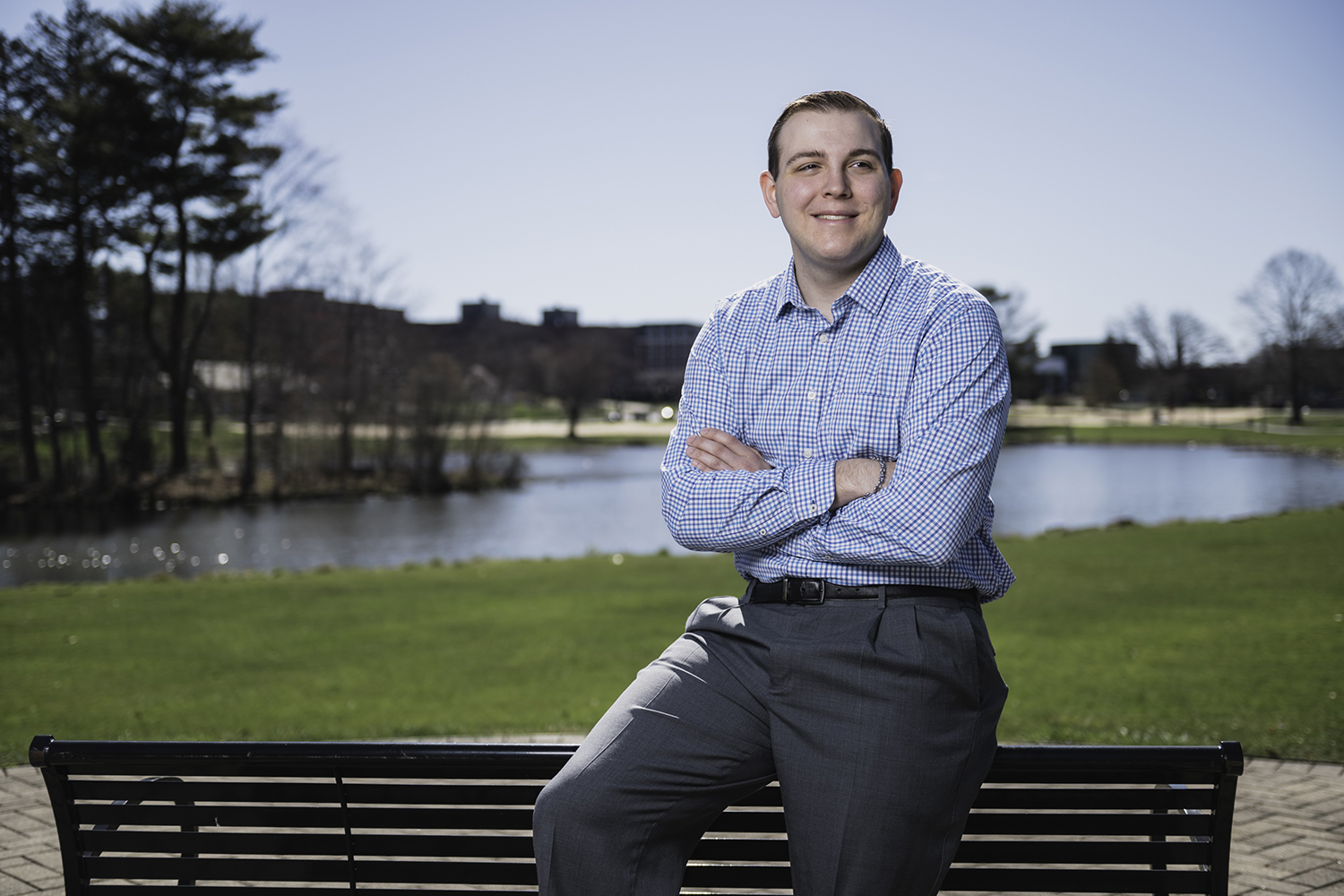There’s nothing like a good summer read. UConn Today asked some UConn personalities to reveal what books they’re reading in their spare time. Their picks encompass a biography of a celebrated coach; a love story; murder mysteries; science fiction; a novel on the theme of racial identity; classics on American politics, global correspondence, and the awakening of environmental awareness; and two books that touch on food. Happy reading!
Martha Bedard, Vice Provost for University Libraries:
I spend my days (and many nights) in the Babbidge Library surrounded by high quality research materials on a wide variety of important topics, so when I have a chance to read for sheer escapism I look for a compelling mystery. One of my favorite mystery writers is Nevada Barr, whose stories center around a ranger for the U.S. Park Services. Each time I immerse myself in a different National Park, and inevitably I plan to visit there someday. If you haven’t read one of her mysteries, start from #1 (Track of the Cat, Guadalupe Mountains National Park, Texas), and you will have 17 more to look forward to! Right now, since there is nothing new from Barr this summer, I am planning to read a book highly recommended by several of my friends – The Professor and the Madman: A Tale of Murder, Insanity, and the Making of the Oxford English Dictionary, by Simon Winchester. Seems appropriate for a librarian who has consulted the OED many times.
Fiona De Merell, Director of the Litchfield County Writers’ Project, Torrington Campus:
I just started reading Elena Ferrante’s My Brilliant Friend. It’s a compelling novel that follows the friendship of two women against the backdrop of Naples in the 1940s to 1960s. The book was recommended by my colleague, English professor Davyne Verstandig, because the quality of writing is so exceptional. The depth and grittiness of the story and the characters make this an unlikely page-turner, and the genius of the writing really twists the reader’s gut in the very best way. This is a compelling summer read – but be warned, you may want to shun all other company until you’re finished with it.
Susan Herbst, President, University of Connecticut:
As a lifelong egghead and political junkie, I usually read Alexis de Tocqueville’s Democracy in America at least once a year. It’s superb summer reading for nerds who want to understand the profound hopes and dreams of our nation. For a French guy – only in his late 20s, traveling America in the 1830s – he still stands as one of our most insightful and searing critics. It’s a good book to read during a presidential campaign especially, to put the bizarre nature of 21st century political discourse in historical context.
James C. Kaufman, Professor of Educational Psychology:
My pick that I reread often is Connie Willis’s Passage. It’s a sci-fi book about a neuroscientist and psychiatrist teaming up to study what happens in the moment we die. It’s rich with history, science, humor, and some profound thoughts about life and death. A good companion for it is Ken Grimwood’s Replay, which asks what would happen if we could live the last 25 years of our life over again (and over and over) with our memories intact.
Robert Landolphi, Culinary Manager, UConn Dining Services:
This summer, I am looking forward to relaxing on my deck with a glass of wine accompanied by some local cheese, and reading The Town that Food Saved by Ben Hewitt. It deals with how a community found vitality in local food. The book is about a small town – Hardwick, Vt. – whose economy was on a downward spiral. It tells the story of how a community of farmers, food hobbyists, and entrepreneurs came together to create a commissary to sell local sustainable foods in the downtown businesses. It boosted the economy and saved the town!
Shayla Nunnally, Associate Professor of Political Science and Africana Studies:
I’m looking forward to reading the novel Americanah by Chimamanda Ngozi Adichie, because I think, amid the many current conversations about race, identity, and politics as they relate to Black Americans, this fictional prose explores the uniqueness of the social construction of race in the United States, such that all persons perceived as being of “African descent” become racially “Black,” no matter where they hail from. The book develops a love story about its main characters, who are Nigerian, coming to the United States and, as nascent active participants, learning the concept of race and the notion that they are identified racially as “Black” once they arrive in America, but previously never were aware of or even experienced what this concept would mean for their lives. Americanah reveals the subtleties and the lived experiences of race for its racial group members, a concept that also implicitly ignores people’s ethnic and even national differences, and melds them into a singular racial history and social categorization – the focus here being “Black American.” I recommend that others read this book because it introduces us to the way that people navigate race and identity in the United States. The book also opens us to the experience of living “external” to the American construction of race and what this perspective means for non-Americans within the African Diaspora. Ultimately, Americanah begs the reader to consider the humanity of us all (no matter where we hail from or what “race” we are categorized as), with the juxtaposition of the complexities of race for people’s lived experiences in the United States.
Barbara O’Connor, Director of Public Safety and Chief of UConn Police:
I’m reading The Girl on The Train by Paula Hawkins. It’s a murder mystery set in London, with an interesting twist. It’s the type of book you can’t put down because you have to find out who done it! Over the summer I like to read things on the less serious side that have nothing to do with work.
Bandana Purkayastha, Professor of Sociology and Asian American Studies and Head of Sociology:
I am planning to re-read several books, including Toby Lester’s Fourth Part of the World: The Epic Story of History’s Greatest Map; Amitav Ghosh’s Glass Palace; and Dorothy Dunnett’s Lymond Series. But the book that is on the top of this pile is Selected Letters of Rabindranath Tagore, edited by Krishna Dutta and Andrew Robinson. Rabindranath Tagore, who was awarded the Nobel Prize for literature in 1913, wrote these letters over the first half of the 20th century. Tagore’s correspondence is with people around the world including Mahatma Gandhi, Charles Freer Andrews, Albert Einstein, Annie Besant, Ezra Pound, Victoria Ocampo, Yone Noguchi, and William Rothenstein. The letters are on many subjects: nationalism and internationalism, tradition and modernity, education, epistemologies, and freedom. The letters reflect the warmth of human relationships between people across the world, as well as a clear denunciation of strident nationalisms and boundaries that break up human connections. This is an intellectual feast; it offers a different way of reading history and a sense of the continuing struggle to create more humane worlds.
Ray Reid, Head Coach, Men’s Soccer
I just finished reading (for the third time) Pat Riley’s The Winner Within. This is a fantastic book for a corporate CEO, a coach, or an administrator. Pat takes you through the steps of how to build a winning team, the things that can crack the “core” of a team, and what to look out for as you assemble your team and develop it. He reflects back on his championship runs with the Los Angeles Lakers and his near misses with the New York Knicks. This is much more than a book about sports, it’is about team building and being successful at whatever you choose in life. The Winner Within is a fantastic read for those who have a burning passion for what they do and want to be successful at it.
Jeremy Teitelbaum, Professor of Mathematics and Dean, College of Liberal Arts and Sciences:
I just finished Marc Reisner’s book Cadillac Desert: The American West and its Disappearing Water. Starting with the story of how Los Angeles seized water from the Owens Valley, and continuing with the histories of other water projects such as Hoover Dam, Glen Canyon Dam, and the Central Arizona Project, Reisner explains how pork barrel politics and special interests dammed the rivers of the West for questionable economic gains and with disastrous environmental consequences. Thoroughly researched, yet written in an acid polemical style, it tells a grim story in a darkly entertaining way. Cadillac Desert was published 25 years ago, and so Reisner’s predictions for the future of the water supply in the west do not account for climate change. Combining the story told in this book with the effects of climate change gives a truly alarming perspective on the water crisis in California and other western states.
Charles Yarish, Professor of Ecology & Evolutionary Biology, Stamford Campus:
Here are the books that I suggest. One of the “oldies” that has stayed with me since I was an undergrad in the 1960s is Silent Spring by Rachel Carson, published in 1962. Each decade I enjoy a reread of this book. It’s a classic that led to environmental awareness in the United States and globally, and may have been responsible for the creation of the EPA (Environmental Protection Agency) during the Nixon administration, as well as the Clear Air and Clean Water acts. I still mention that in some of my non-science major classes. The other book is more recent and is a gem: Seaweeds: Edible, Available, and Sustainable by Ole G. Mouritsen. The book takes readers on a comprehensive tour of seaweed, describing what seaweeds actually are (algae, not plants) and how people of different cultures have utilized them since prehistoric times for a whole array of purposes—as food and fodder, for the production of salt, in medicine and cosmetics, as fertilizer, in construction, to name just a few. I read the first few chapters and was captivated. It’s meant for generalists and I think it will have appeal to any audience.
